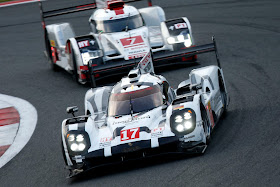The bevel gears and crown wheels of all rear-axle ratios for the 300 SL (W 198) are again available as genuine spare parts. Thanks to a costly reproduction process, Mercedes-Benz Classic is now able once again to offer some gear ratios that have not been available for several decades. This allows the famous "Gullwing" and Roadster to be restored with utmost authenticity. Mercedes-Benz machine settings from the 1950s guarantee outstanding accuracy of reproduction – for ultimate smoothness of operation and fascinating driving dynamics even more than 60 years after the fascinating sports car made its debut in 1954.
Stuttgart. – Ever since the mid-1950s, the Mercedes-Benz 300 SL (W 198) has been a source of fascination as a super sports car with exceptional performance, engineering roots on the racetrack and epoch-making looks. The standard rear-axle gear ratio was 1:3.64, allowing a top speed of 235 km/h. To enable customers to exploit the vehicle's potential entirely in line with their personal preferences, the 300 SL models were optionally available with alternative rear-axle gear ratios. This made it possible to further vary the characteristics of the vehicle – either towards high top speed (up to 250 km/h) or towards high acceleration.
The standard gear ratio has always been available as a Mercedes-Benz genuine part. However, the bevel gear/crown wheel sets of many individual variants have long since been unavailable. In order once again to be able to offer the full range of rear-axle gear ratios for the 300 SL "Gullwing" (model variants 198.040 and 198.043, manufactured from 1954 to 1957) and 300 SL Roadster (model variant 198.042, manufactured from 1957 to 1963), Mercedes-Benz Classic has now had them reproduced with utmost authenticity.
Complete range for exclusive classic vehicles
The range of rear-axle gear sets with part numbers A 198 350 00 39 to A 198 350 09 39 extends from ratios of 1:3.25 for maximum speed to 1:4.11 for maximum acceleration. As intermediate ratios, the range of rear-axle gear ratios also includes 1:3.42 (for higher speed) and 1:3.89 (for higher acceleration). This means that the rear axles of the different W 198 variants can once again be restored to their original condition. Like any other spare part from Daimler, the gear sets are available under the 24-hour service through all Mercedes-Benz sales partners.
In addition to the final drives for the two variants of the 300 SL (W 198), Mercedes-Benz Classic has also reproduced the corresponding parts for the SL successor model W 113 ("Pagoda", 1963 to 1971) as well as for the sporty-luxurious models 300 S and 300 Sc (W 188, 1951 to 1958) and the prestigious saloons Mercedes-Benz 300 (W 186 and W 189, 1951 to 1962) and Mercedes-Benz 600 (W 100, 1963 to 1981). There are also gear sets for the rear axles of the S-Class predecessors W 111/112 (1959 to 1968) and W 108/109 (1965 to 1972) as well as for the W 136 model series with the post-war models 170 V, 170 D, 170 S, 170 S-V and 170 S-D (1946 to 1955).
Reproduction of the gear sets for the 300 SL required new tooling. The raw forgings are machined on original gear-cutting machines, which were delivered to only a handful of companies worldwide. The necessary machine settings provide the guarantee of total authenticity. They are part of the special historical expertise of Mercedes-Benz.
Further information on prices and availability can be found in the Parts Search section of the website www.mercedes-benz.com/classic-teile.
Available rear-axle ratios for the 300 SL (W 198)
300 SL "Gullwing" (W 198)A 198 350 00 39: Ratio 1:3.42 (option for higher top speed)
A 198 350 01 39: Ratio 1:3.64 (standard)
A 198 350 02 39: Ratio 1:3.25 (option for highest top speed)
A 198 350 04 39: Ratio 1:4.11 (option for highest acceleration)
A 198 350 05 39: Ratio 1:3.89 (option for higher acceleration)
A 198 350 01 39: Ratio 1:3.64 (standard)
A 198 350 02 39: Ratio 1:3.25 (option for highest top speed)
A 198 350 04 39: Ratio 1:4.11 (option for highest acceleration)
A 198 350 05 39: Ratio 1:3.89 (option for higher acceleration)
300 SL Roadster (W 198 II)A 198 350 03 39: Ratio 1:3.64 (standard)
A 198 350 06 39: Ratio 1:3.25 (option for highest top speed)
A 198 350 07 39: Ratio 1:3.42 (option for higher top speed)
A 198 350 08 39: Ratio 1:3.89 (option for higher acceleration)
A 198 350 09 39: Ratio 1:4.11 (option for highest acceleration)
A 198 350 06 39: Ratio 1:3.25 (option for highest top speed)
A 198 350 07 39: Ratio 1:3.42 (option for higher top speed)
A 198 350 08 39: Ratio 1:3.89 (option for higher acceleration)
A 198 350 09 39: Ratio 1:4.11 (option for highest acceleration)

















